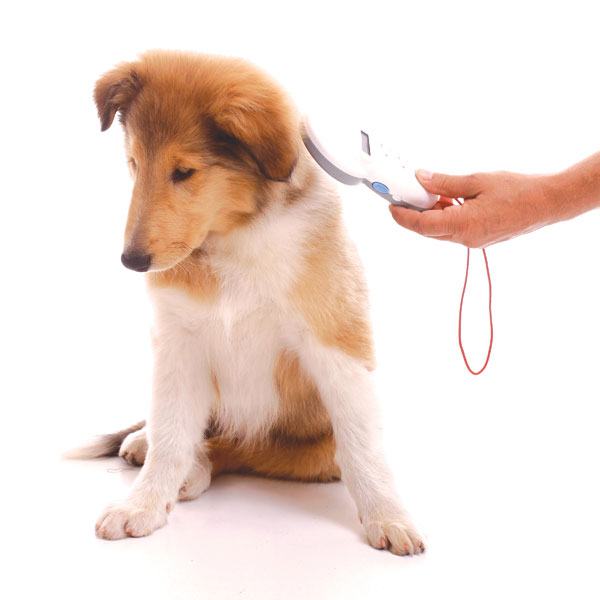I was pulling out of a parking lot when I spotted her—a reddish ball of fluffy fur sprinting southbound on Fulton Avenue. Dodging car after car, she crossed the freeway overpass and then Auburn Boulevard.
I followed the wayward pooch to Edison Avenue, where she took a hard left. Twice when she stopped, I jumped out of my car and called to the misplaced mutt—only to have her ignore my pleas and keep moving.

When she turned down a residential court with nowhere to go, I had her trapped. I grabbed a dog lead from the emergency kit I keep in my car for these exact situations. The exhausted dog sat down, tongue dangling, and let me scratch behind her ears and slide the lead over her head.
She had no collar, no identification tag and, as it turned out, no microchip.
But she appeared in good condition. Her fur was clean, soft and mat-free. She rolled on her back and exposed a fat pink belly, not a flea in sight. She was not a stray who had lived a hard life on the streets. She belonged to someone. But she couldn’t tell me who.
Approximately 6.5 million companion animals enter U.S. shelters as strays each year, the American SPCA reports. Yet only 10 percent are reunited with their owners.
Ensuring your pet has your contact information—on a tag attached to or information printed on a comfortable collar—is the fastest way to bring your lost animal home. If the dog I chased down had a tag with a phone number (or several numbers) and a home address, I could have returned her immediately. No middleman involved—the unfamiliar, often stressful environment of a shelter, veterinary office or stranger’s house would have been avoided.
But, because collars can slip off, a microchip is a critical backup security measure. Microchips are small cylindrical devices, about the size of a rice grain, that come preloaded in a sterile applicator. The chip is injected under the loose skin between the pet’s shoulder blades in a quick and relatively painless procedure, similar to administering a vaccine.
“The primary benefit of a microchip is that once implanted it cannot get lost, torn off or taken off the collar like an identification tag can,” says David Dickinson, director of Sacramento County’s Bradshaw Animal Shelter. “If the owner keeps contact information current by reporting any changes to address or contact numbers, the animal will have a much better chance of being reunited if it gets lost.”
Microchips don’t track your animal’s location like a GPS. They use radiofrequency identification technology to ID the pet. There’s no battery, no moving parts, nothing to charge, nothing to wear out or replace. A microchip should last the pet’s lifetime.
“Animals can be scanned at any veterinary establishment and those with chips can be reunited without entering an animal shelter,” Dickinson says. “When a stray animal is picked up by one of our animal control officers, they scan for chip immediately and can return to owner if registered correctly with current information.”
When a scanner is passed over the animal, the microchip’s unique ID number is displayed. Think of it as your pet’s Social Security Number. Standard practice by shelters and rescue groups is to scan all incoming pets for microchips. If one is detected, staff will contact the microchip company to determine who registered the ID number.
Therefore, it’s critical to 1) remember to register the microchip number; and 2) keep your contact information up to date with the microchip registry. Dogs have been reunited with owners after being found hundreds of miles from home or years after they were lost—thanks to microchips.
A collar with an ID tag and a microchip are the least we can do to keep our pets safe.
Cathryn Rakich can be reached at crakich@surewest.net. Follow us on Facebook, Twitter and Instagram: @insidesacramento.
















